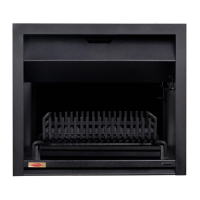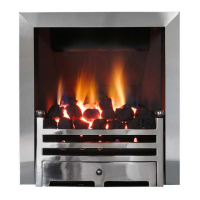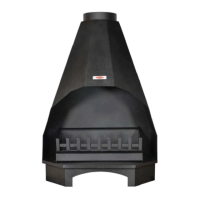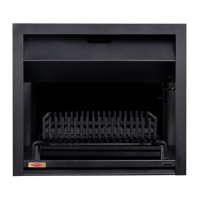Commissioning
After Installation Is Complete
In your own interest and for safety, in the United Kingdom, it is the law that all solid fuel
appliances are installed by competent persons. The Heating Equipment Testing and Approval
Scheme (HETAS) require its members to work to recognised standards.
Air Supply
When commissioning the fire ensure that the air supply is adequate for the fire. Particular
attention should be observed if there is an extractor or fan in the room or adjoining room as this
may have an effect on the draw of the flue / fire. The fire should be tested with the extractor fan
on and with all inter-connecting doors to the room closed and then open. If required additional
air may be required to overcome the extractor or fan pressure.
Smoke Draw Test.
Ensure appliance is not alight.
Warm chimney for 10 minutes using a blowlamp or similar heating device.
Place a smoke pellet in the wood tray or basket grate towards the front of the opening of the fire
and ignite the pellet.
Check that the smoke is being drawn into the fire and flue and that it is discharging satisfactory
at the flue terminal.
Notice Plate
Ensure that any notice plate is provided in line with the building regulations J4. The notice
should contain information on the performance characteristics of the hearth, fireplace, flue or
chimney and is to be fixed in an appropriate place.
Cleaning Up
Immediately after installation, the visible parts of the fire should be cleaned up and painted
with a heat resistant matt black paint. Thereafter, the surfaces may be kept clean by using a
light brush to remove dust and by occasional wiping with a lint-free cloth. Annual repainting is
recommended. Do not use black leading or paint the interior of the firebox.
Lighting after installation
The Jetmaster should not be lit until all cement and plasterwork is completely dry and cured.
When installation has involved building in cement mortar allow:-
a. 7 days drying time if the house has other forms of heating.
b. At least 14 days if the installation is in a new or unoccupied property, or is fitted into a
completely new chimney breast.
Chimney Sweeping
We recommend that flues should be swept at least twice a year, during the heating season.
More frequent sweeping may be necessary where fires are burned throughout the year or where
low grade wood or bituminous coal are used as fuels. Fires are provided with removable throat
restrictors to facilitate chimney sweeping and for the removal of soot from the top of the unit.
A small boss flue brush head that will fit to standard rods may be required for the smaller
fires. These brush heads should be available from any good hardware store or through your
Jetmaster distributor. See Servicing Instructions.
16
